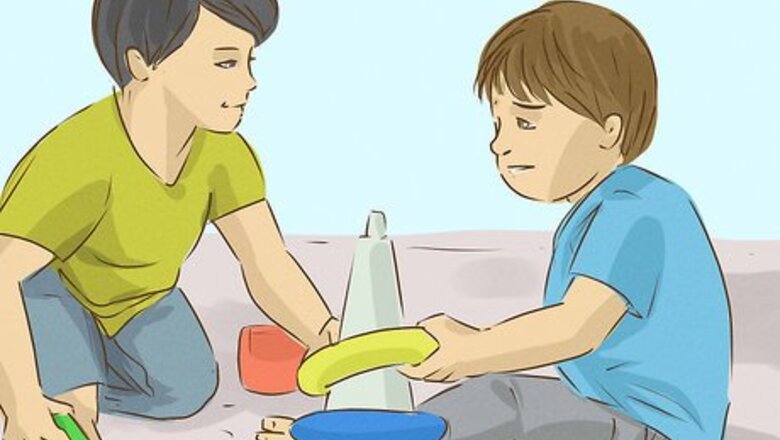
views
X
Research source
It can be difficult to detect ASD in children because they can be relatively capable; a child with "Asperger's" often has a high level of language development and an average or high IQ. However, you may be able to recognize a toddler on the autism spectrum by watching their social interaction and behaviors. If you identify traits of autism in your child, contact your pediatrician.
Checking Social Behavior
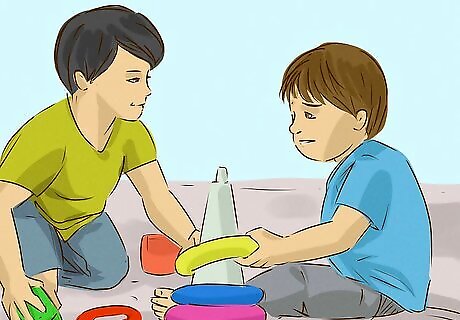
Examine the toddler's social interactions. Difficulties interacting with others is one of the main features of autism. As such, carefully observing how they interact with others can be a good way to recognize signs of Asperger's/autism. Look for whether they misinterpret simple social cues such as turn-taking during conversation, as this can be a sign of autism. If they have trouble joining or staying in social interactions, it may be a sign of Asperger's/autism. For example, the child may leave the room in the middle of playing with another child or otherwise be disruptive. Autistic children tend to prefer playing by themselves and may even get upset if another child approaches them. They may only interact with others when they want to talk about an interest or if they need something. Possible signs of ASD include awkward social interactions such as consistently avoiding eye contact, and unusual body posture, gestures, and/or facial expressions.
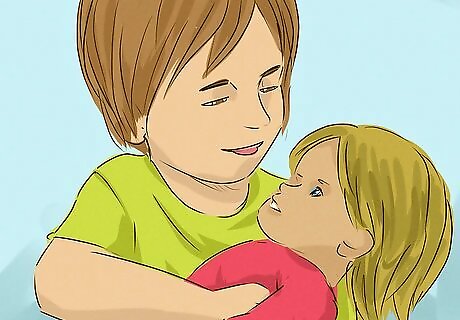
Examine imaginative play. This type of playing is often different in a child with Asperger's. For example, a child with Asperger's may dislike, or struggle to understand social games. They may prefer games with a set script, such as acting out a favorite story or TV show, or they may enjoy creating fantasy worlds, but struggle with social role play. For example, if your daughter organizes her stuffed animals into elaborate societies, but doesn't role-play interactions, she may be autistic. In addition, they may seem "in their own world," or may try to impose their choice of game on their playmates or otherwise act in a very one-sided manner. Some children with Asperger's can follow the lead of a close friend or sibling with roleplaying, but don't do it on their own.

Watch for how they read others. Although a young child with Asperger's/ASD may have some sense of emotions at a conceptual level, they may have difficulty reading and interpreting others' feelings in real social interactions, which tend to be fast-paced. They may also have trouble understanding social boundaries such as need for privacy. Disregard for other's feelings may be interpreted as being insensitive but it is really beyond the child's control.

Look at whom they choose to socialize with. Those with Asperger's/ASD tend to have great difficulty interacting with their peers. A child who constantly seeks out an adult for conversation over another child may be on the autism spectrum. Although toddlers may not always have much of a choice about who they interact with, try to create opportunities such as play dates, so you can try to get a sense of their interaction choices and social behavior.

Watch for monotonous or idiosyncratic speaking. One cue of autism is if the toddler talks in a monotonous or flat tone (if they are talking at this point). In some cases this is more of an odd, or higher tone. How a child stresses words and the rhythm of speech may be affected by Asperger's/ASD. Make sure you get a broad enough range of the toddler speaking to be sure that the monotonous speaking is relatively consistent across different contexts. Some autistic children will speak in a singsong or otherwise unusual tone.

Watch for unusual language use. Be mindful of when your toddler starts joining words together and if language development is progressing normally. For most toddlers, including those with Asperger's, this will be around age 2. Although language development can be normal or advanced in young autistic children, the social context in which language is used is often atypical; for example, words may be repeated but not understood. You may notice a child with Asperger's is highly skilled at language and very verbal. For example, they may list off every item in a room. However, speech may seem overly formal or scripted as a child with Asperger's/ASD tends to use language to relay facts, not convey thoughts or feelings.
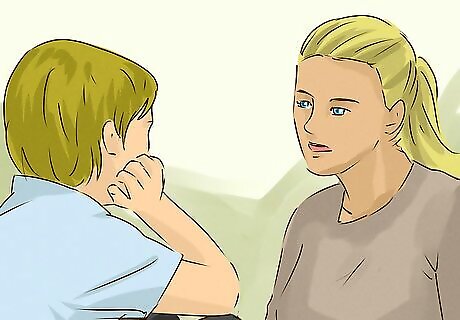
Watch for interactions with teachers or daycare workers. Young autistic children often have difficulty deviating from routine. One place routine may be broken is when the toddler interacts with teachers or daycare workers. As such, it is important, when attempting to recognize autism in a toddler, to keep an eye out for how the toddler acts in this context. Your toddler may need more support and prompting than their peers, or become anxious without guidance from an adult. If you are not with the toddler during the day, you could ask the teacher or daycare worker to keep an eye out for certain behaviors (such as getting upset when asked to deviate from routine) and report back to you.

Examine question and answer behavior. Check to see if the toddler either answers their own questions, or if they only answer questions but does not continue the conversation. A young autistic child may only initiate questions on topics that interest them.
Examining Repetitive Behavior and Sensory Sensitivity
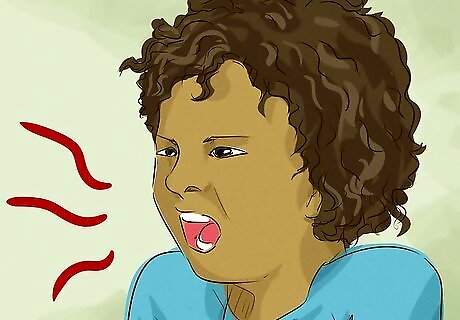
Watch for difficulty adapting to change. A young child on the autism spectrum tends to not accept change well and prefers highly structured days and rules. These rules tend to be nonfunctional or somewhat arbitrary in that they could be broken or changed. If you tend to be in the same routines when interacting with your toddler, try changing things up and gauging their reaction to get a sense of whether they are on the autism spectrum.
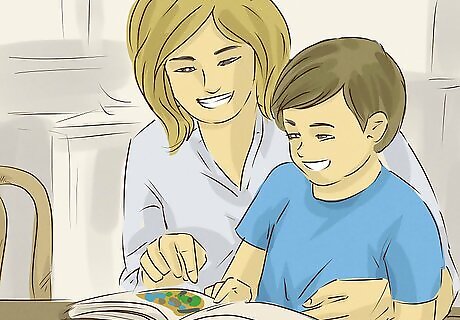
Look for passionate special interests. If you or others classify them as a "walking encyclopedia" on a given topic, that's a tell-tale sign of Asperger's/ASD. They may either be very focused on a particular subject or be very intensely into it. Your child's interest in a particular area may be a sign of ASD if it is unusually intense or focused, especially when compared to others their age.

Observe repetitive motor behaviors, aka "stimming." Young children with Asperger's/ASD commonly show repetitive motor behaviors such as persistent hand twisting or finger tapping or even whole-body movements. These behaviors tend to be longer and more ritualistic looking than tics, which are shorter in duration. They may be used to self-soothe, express emotion, focus better, or simply have fun. An autistic child will become distressed if you get in their way (e.g. passing in front of them while they are trying to walk in circles around a table). Try this once and see how your child reacts. While stimming in general is harmless and does not need to change, some individual stims (e.g. head-banging or ripping the wallpaper) cause harm. These can be redirected to better stims. A child with Asperger's may also demonstrate difficulty in some motor skills such as catching and throwing a ball, for example. In general, they may appear clumsy or awkward in their movements.

Look for unusual sensory reactions. Determine if the toddler has an abnormal reactions to touch, sight, smell, sound or taste, as this can be a sign of autism. Although sensory sensitivities vary, most frequently children with Asperger's will experience intense reactions to an ordinary sensation. Some autistic children are not sensitive to pain, or do not know how to communicate it.
Getting a Diagnosis and Treatment

Recognize you need a doctor to officially diagnose. Although you may recognize some telltale signs of ASD in your toddler, ultimately you need the professional discernment of a doctor or other qualified individual. Your doctor may choose to recommend tests to more thoroughly examine relevant potentially telling aspects of your toddler's cognitive development.

Express your concern to your doctor. If you suspect your toddler is showing signs of ASD, tell your doctor. Try to have relevant information on hand such as if your child: Doesn't respond to social interaction with a smile of happy emotional expression by 6 months of age. Doesn't mimic facial expressions or facial movements (such as sticking out your tongue and your toddler doing the same), or sounds, by 9 months of age. Is not babbling or making cooing sounds by 12 months of age. Isn't making gestures such as pointing, by 14 months of age. Has not uttered single words by 16 months of age or pairs of words by 24 months of age. Doesn't engage in imaginary play by 18 months of age. Seems to be regressing in their social or verbal skills.

Realize you may be referred to a specialist. There are individuals who may specialize is diagnosing and/or treating ASD, such as child psychologists, pediatric neurologists, or developmental pediatricians. Keep in mind there is no single medical test to diagnose ASD, so try to remain patient as you and your doctor work through the diagnosis process.

Recognize that autism is lifelong, but your child can receive support. There is no "cure" for autism, but therapies can help your child gain skills and be more comfortable. The aim of these treatments is to maximize your child's ability to function day to day through gaining coping mechanisms and focusing on learning outcomes. Some treatment options include: Behavior and communication therapy in which the aim is either to reduce problematic behaviors and communication styles, or to improve these areas by teaching new skills. Family therapies in which the emphasis is on teaching the toddler's family different ways to interact with the toddler to promote their social and emotional development. Sensory integration therapies and a sensory diet, to improve your child's tolerance to sensory input and manage hyperactivity. Educational therapies that are highly structured individually tailored programs executed by a team of specialists who have expertise in communicating with and teaching individuals with ASD. Medications such as antidepressants or antipsychotics can be somewhat effective in controlling symptoms such as anxiety and severe behavioral problems, respectively.

















Comments
0 comment